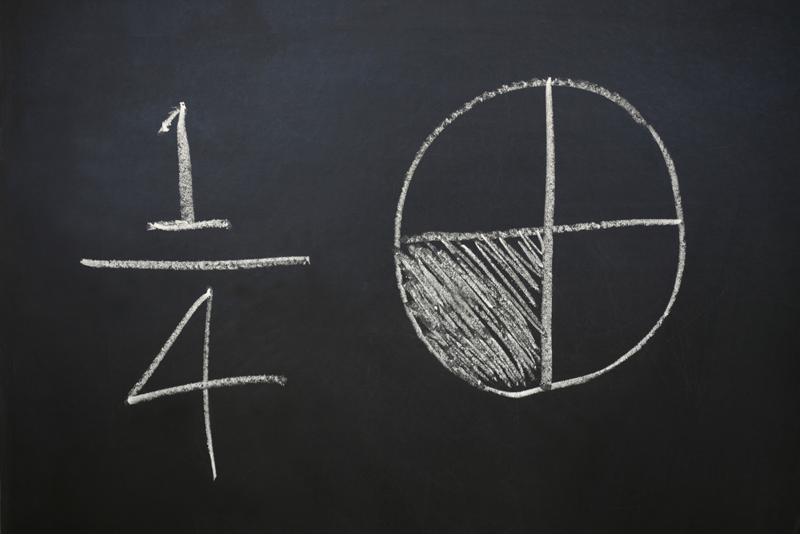You use percentages every day. That store has a 50 percent off sale. Your computer is 23 percent through its download. After seeing these values for so long, they’re familiar to you, but not necessarily to your students.
Fortunately, fractions and percentages have a lot in common. Both express ratios, just in different ways. For this reason, teaching your class about percentages by using fractions is a good plan. By the time your students get to this concept, they’ve already learned about fractions and should be familiar with them. As you work on your lesson plans and math talk, use these tips for translating knowledge of fractions into percentages:
Define percentages
You can start your lessons on percentages by having your class define the term. Ask students what they think it means, and facilitate a group discussion. Ultimately, you should come to the conclusion that percentages are part-to-whole ratios. Also, share with your students that the word “percent” comes from the Latin phrase for “per hundred.” This will help them understand that percentages are ratios that compare values to a whole of 100. For instance, 25 percent is 25/100.

Fractions and percentages are both ratios.
Visualize part-to-whole ratios
You can use pie charts and blocks to represent a whole. Any visualization chosen to show a piece of that whole should be familiar to students, as you likely used such tools when talking about fractions. You might draw a circle on the board that’s 1/4 shaded. Ask students what it is. Someone might say that it’s 1/4, and that person would be right. Use that to lead into a discussion about percentages.
For instance, you might ask “If the circle is 100, how much is the shaded area?” The answer would be 25, and you can show how the shaded area is 25 percent of the whole circle.
Comparing and linking concepts
Decimals also help students understand percentages, and you can use decimals, fractions and percentages all together. Distribute Cuisenaire rods to your students, and assign different values to each color. For instance, dark green could be 100 percent. Students could add other rods together to learn their value. In some cases, they may have a sum that’s greater than 100 percent, and that’s OK. This can show values that are more than the whole. Link this to fractions and decimals to help students see another type of ratio.
Use percent problems
Percent problems use a fraction format, so they’re really easy to connect to the concept. For instance, a percent problem looks like this:
Percent = Part
100 Whole
You can use this formula to help students calculate percentages and word problems. A word problem may look like this: Your favorite store is having a sale on T-shirts. Each T-shirt is 30 percent off the original price. If the shirt you wanted was originally $15, how much will it cost with the discount? The ratio would look like this:
30 = x
100 15
Students can solve this equation to find the answer. And because the problem looks like a fraction, students see something they recognize.
Percentages are just another part-to-whole ratio, so using fractions to teach the concept could help your students grasp the idea. You can find lesson plan ideas that use fractions to teach percentages in our book “Math Matters,” or visit our website.

 All Blog Posts
All Blog Posts
Comments